
Starting June 1st, 2023 Our warehouse fee will be $0.65/cubic foot per month
In effort to lower the warehouse storage fee during inflation, we have went narrow aisle racking.This construction took us four months but the project is finally completed. With narrow aisle racking, we are able to drop storage by 24%.We as partners will go through this inflation together.
02/18/2024
A key component of both customer happiness and corporate success is order fulfillment. Understanding shipping zones is crucial to ensuring that shipping is as reliable, efficient, and affordable as feasible. Consider delivering packages to several locations. To give clients accurate information, shipping zones and associated prices for each destination must be determined. Postal zones also affect delivery predictions because packages are usually delivered faster within the same zone than they are to another.
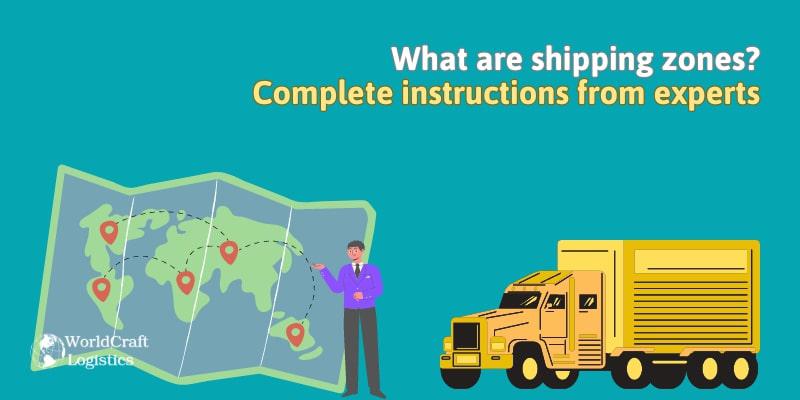
FedEx and USPS are two carriers that use zone rate shipping. Carriers use this strategy, basing their delivery charges on the destination's shipping zone. Costs can differ greatly depending on the zone.
In order to streamline operations and reduce expenses, eCommerce companies must have a thorough understanding of shipping zones.
Carriers use geographic areas known as shipping zones to determine shipping costs. Depending on the carrier, area, and nation, these zones could change. Carrier zones are typically used to calculate shipping charges and estimated delivery times for specific items.
Zones are separated by carriers into geographic shipping regions that cover a wide variety of destinations. These shipping zones, which can range from one postal code zone (e.g., Zone 1) to over 50 zones (e.g., Zones 1-50), are usually labeled using an alphanumeric method.
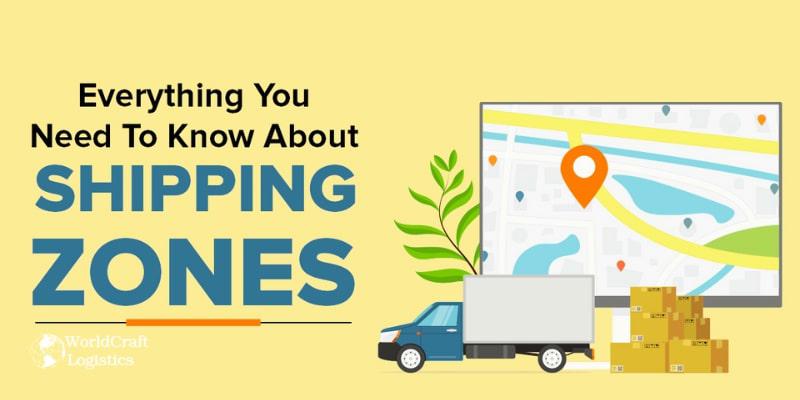
Understanding the shipping zone can help you make better sense of estimated costs and delivery times. The United States Postal Service (USPS) postal zone chart is typically used as a reference point for shipping zone calculations, even though zones vary for each shipping company.
New related terms you should not ignore:
The place of origin, which is situated in Zone 1, is where an order is dispatched from. The destination zone is the address to which it is shipped. Depending on how distant it is from the point of origin, the destination zone number will vary; Zone 8 being the furthest away.
Zones may be transported to entirely different zones from two separate points of origin that are shipping to the same destination address because zones are dynamically determined based on where your shipment is shipped from.
For instance, you are shipping to Zone 7 if you ship from Los Angeles, California to St. Louis, Missouri.
On the other hand, you are sending to Zone 4 if you ship from Dallas, Texas, to St. Louis, Missouri.
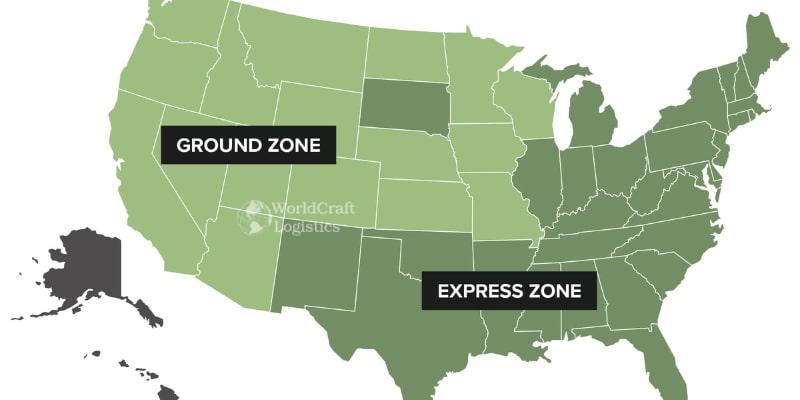
Shipping zones are carrier-specific. For example, USPS has a special shipping zone system that calculates postage rates and times using a regional rate zone map. Transit time maps are used by other carriers, like UPS, to determine their delivery windows and timeframes.
Businesses should educate themselves with their shipping zone system before choosing a carrier. Furthermore, carriers frequently upgrade their systems and zones, so it's critical to be informed of any modifications.
There are nine postal zones on the USPS regional zone map. The shipping regions nearest to the shipment origin are covered by Zone 1 of the USPS zone map, whereas the shipping regions farthest from the shipping origin are covered by Zone 9.
The USPS regional pricing zone map divides shipping regions into zones based on destination zip codes. The USPS zone chart shows the following USPS regional zones along with the corresponding distances:
Zone 1: up to fifty kilometers from the point of shipment
Zone 2: 51–150 kilometers
Zone 3 covers 151–300 kilometers.
Zone 4 covers 301–600 kilometers.
Zone 5: Miles 601–1000
Zone 6: Miles 1001–1400
Zone 7: 1401–1800 miles
Zone 8: greater than 1801 miles
Zone9: American territory
The regional zone map and rate tables of USPS are the foundation for zone pricing. The price may differ by weight and between postal zones depending on the USPS service utilized. Furthermore, you will see that a USPS Priority Mail zone map differs greatly from another package zone map, such the First Class Package zone map. This is due to the fact that the prices for each of these services vary.
The cost of delivery could alter from year to year due to frequent changes in USPS shipping rates by zone. For example, the USPS zone prices for 2020 and 2019 are not the same. For the most recent delivery prices, review the shipping zone rate tables prior to mailing a shipment.
Since UPS determines delivery zones based on transit days, their zone map differs from the USPS's. It computes delivery charges and timeframes by dividing US postal areas into transit day ranges and using the distance between the shipping origin and the destination. UPS offers over forty shipping zones, each with a different transit day count ranging from one to six days.
It's possible to establish shipping zones based on ZIP codes using eCommerce systems like Shopify. Shopify leverages this functionality to assist companies in optimizing client delivery times and customizing pricing for every shipping zone. Businesses may define delivery prices for each zone and make sure that customers are aware of the costs of delivery by using Shopify shipping.
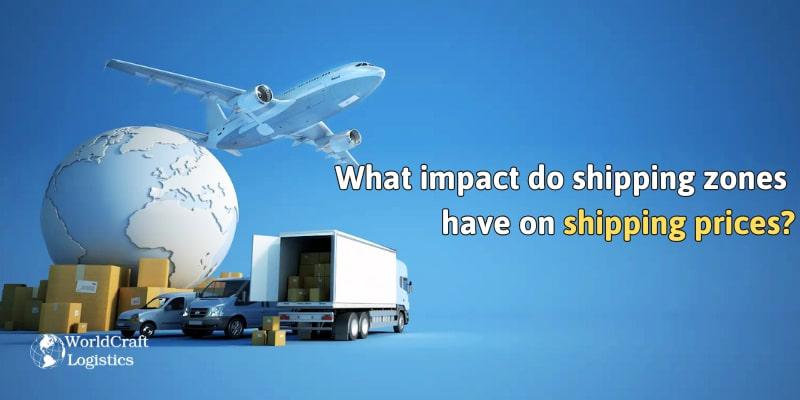
The weight of the package and the zone number to which it is being transported are the two elements that determine the shipping rates for e-commerce packages shipped within the United States. We go into greater detail about each of these elements below.
Zones are used by shipping companies to determine prices for specific services, including package delivery. When it comes to zoned services, the larger the zone, usually the higher the cost.
There are certain exceptions, though. When traveling within the United States, there are certain carriers or services that offer a flat rate, meaning that the cost is the same no matter where you go.
For instance, USPS distinguishes between services that are zoned (First-Class Mail, USPS Marketing Mail, Library Mail, and Media Mail) and those that are not (Priority Mail Express, Priority Mail, USPS Retail Ground, and Bound Printed Matter).
The exact shipping costs will depend on the weight and size of the order in addition to the carrier and service selected, the origin and destination zip codes, and other factors.
Distance affects all businesses with the January 2019 zone-based pricing shift for even lightweight products sent via USPS First Class Mail. But when the zones rise, the price increase will be more pronounced for heavier packages.
Let's have a look at the chart below. The cost difference for transporting a one-pound product from Zone 1 to Zone 10 is just $3.90. On the other hand, the cost increase from Zone 1 to Zone 10 is $14.65 if you are shipping a 3-pound product.
In essence, for lighter packages, the rate of price increase from zone to zone is smaller, and for heavier packages, the rate of price increase from zone to zone is larger.
For illustration purposes, below are sample USPS rates.
This example shows how the weight of the order and the shipping distance (measured in zones) combine to affect the total shipping cost.
A word about dimensional weight: Shipping companies estimate weight based on a package's length, width, and height by measuring the longest point on each side. Whichever figure is higher—the package's actual weight or its estimated dimensional weight—will determine the shipping fee.
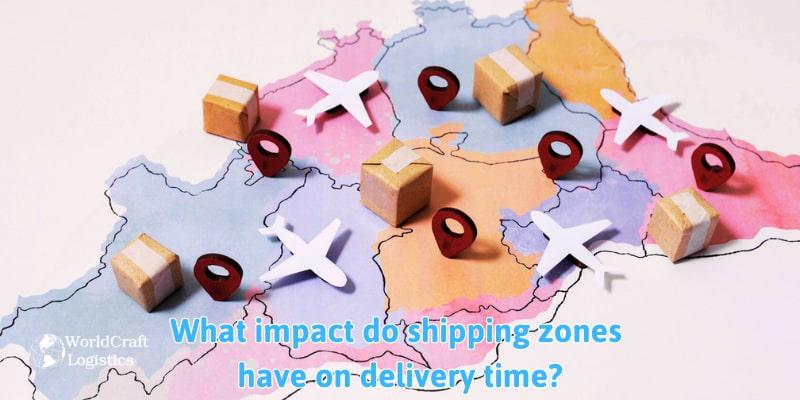
A package sent to a higher zone, such as Zone 7 or 8, will nearly certainly arrive in more days than a package sent nearby (e.g., Zone 1 or Zone 2). Cutting down on transit time is crucial because delayed delivery might lose you business.
As a matter of fact, 24% of consumers cancel orders because of delayed shipping, and 73% of consumers anticipate inexpensive, prompt deliveries.
Consumers now think that a maximum of 4.1 days is the appropriate amount of time to wait for their order (compared to 5.5 days in 2012).
Orders completed from one area (out of New Jersey, for example, as shown in the map below) may take five to six days to reach customers in Oregon.
Source of image: UPS
It follows that the lowest zone is the only place where same-day shipping and delivery are possible.
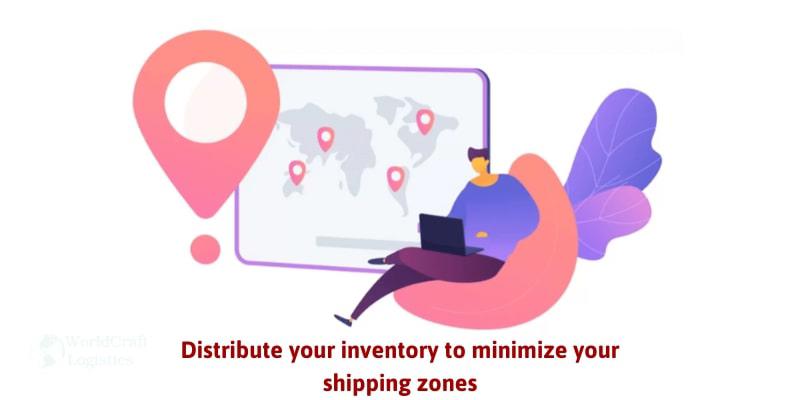
Is it possible to just avoid sending to the highest shipping zones since they have the greatest shipping costs and transit times? It is feasible, but in order to accomplish it, you will have to choose your orders carefully and where to fulfill them.
The optimal fulfillment locations for your company are those that position your inventory closer to common order destinations, as identified by examining your previous purchase history. There is no one "best location" that works for all fulfillment scenarios in order to minimize shipping zones. Shipping from a less populous area, which can't efficiently reach as many people, can take longer than shipping from a facility adjacent to a large metropolis when it comes to reaching a huge volume of people.
However, the majority of an e-commerce company's clients are spread out geographically around the nation rather than concentrated in a single state or region. Many brands divide their inventory across several fulfillment centers spread around the US in order to avoid having to ship to a high zone.
The idea that having numerous fulfillment centers might save money may seem contradictory, yet there are many situations in which it makes sense (most typically when fulfillment is outsourced, as there are no leases, labor, equipment, or other costs involved).
The utilization of one fulfillment center in the continental United States and three fulfillment centers are contrasted in the maps below. Each shipping zone is represented by a color in the legend, with red being the zone that is nearest and least expensive to ship to.
The colors change to orange, yellow, green, blue, and even purple as the zones get bigger.
Using one fulfillment center (located in Moreno Valley, California, as shown on the map to the left), we can observe that while some of the country is colored in red and orange hues, a larger portion is green, blue, and even purple. Because this region is designated as Zone 8, shipping costs there will be higher.
There are significantly more red, orange, yellow, and green areas when using the three fulfillment facilities, which are located in Moreno Valley, California; Dallas, Texas; and Bethlehem, Pennsylvania, as shown on the map to the right.
Only a few areas remain in Zone 6 after we eliminated the most costly zones (Zones 7 and 8). In addition to covering heavily populous states like California, Texas, and Pennsylvania, these three fulfillment center locations also cover a number of huge states with sparse populations, including Montana, Wyoming, and so on, where there are green regions.
Sending more orders to lower zones would be possible if three fulfillment centers were used rather than just one. Put otherwise, the establishment of each fulfillment center would result in a significant reduction in the average shipping cost per order. Additionally, you may offer two-day ground shipment via various fulfillment centers in more regions rather than depending solely on costly air shipping.
In the end, you may reduce the average shipping zone number, get rid of the most expensive shipping zones, and save money on shipping by using the dispersed inventory technique. Some brands have even observed that spreading out their inventory over multiple fulfillment centers can result in a 25% decrease in shipping costs and a 13% improvement in their bottom line.
However, be sure to complete the following tasks before committing to distributing your inventory:
Examine past order and zip code data to determine your best fulfillment locations again.
If you transport from one side of the country to the other frequently, consider whether your company would profit from a more central warehouse location, or even a bi-coastal strategy.
Experiment with alternative fulfillment center locations to see what your shipping costs would be if you went from one to two (or two to three, and so on) and how those would be compensated by the additional costs you would spend for transportation and warehousing.
Spreading inventory not only lowers expenses but also expedites transit times. Although shipping can be accelerated by anybody, doing so comes at a significant expense that severely reduces profit margins. Inventory can reach clients more quickly by ground transportation if it is stored closer to them.
For instance, WorldCraft's average standard US ground transit times (across all carriers) are the basis for the zone data below, which is updated every week from January 2020 to December 2021. It shows timings split down into shipping zones across the United States from the point of sale to the point of delivery, or when a client places an order and it is delivered to the shipping destination.
The average Zone 8 cargo over a period of time is shown by the top line (light green). It should come as no surprise that it is always the slowest zone to ship to, taking anywhere from slightly more than three days to 7.27 days at the very end of peak season 2020, right before 2021).
The average Zone 1 cargo over time is shown by the bottom line (dark blue). At the height of the 2020 holiday season, the average delivery time for this more "local" option varied from 1.86 days to 3.66 days.
We can remove the top 3 zones (6–8) to view the updated delivery speeds below, if we go back to the map example where we used 3 fulfillment facilities spread across several US areas.
The fastest average shipment speed for Zone 5, the tallest zone still standing, was 1.97 days.
During 2020's chaotic peak season, the slowest average Zone 5 shipping speed was 5.43 days, a decrease of nearly 2 days from the previous slowest Zone 8 shipping speed the same week.
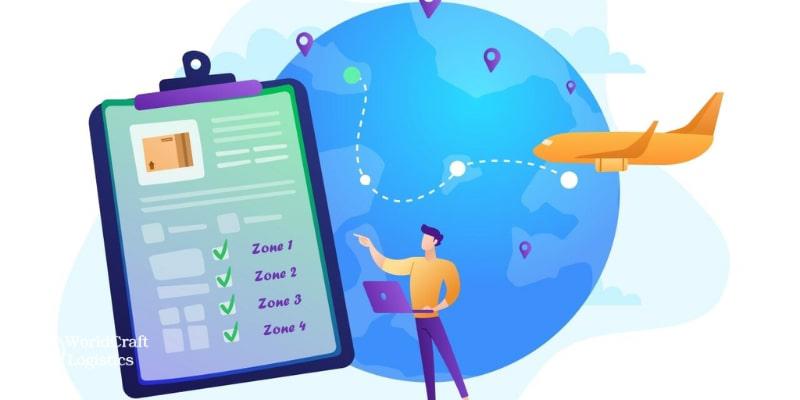
Carriers such as USPS offer shipping zone look-up tools (USPS zone lookup) and shipping zone maps (USPS dynamic zone map) for locating zone information. An overview of the shipping regions used to determine charges and delivery times is given by this USPS zone map.
Furthermore, shipping zone rate charts are usually offered by carriers to assist shippers in figuring out the delivery charges for each zone. The costs for each shipping zone are shown in these domestic zone charts, together with any additional services and fees that could be relevant.
An important consideration for estimating expenses and delivery schedules is the shipping zone. This is due to the fact that carriers compute delivery using shipping zone maps and expenses using shipping zone rate tables.
To cut expenses and boost productivity, logistics experts should take advantage of shipping zone information, optimization services, and flat shipping pricing. By doing so, organizations may create a better shipping experience for their customers, as well as boost customer happiness and loyalty.
We at WorldCraft Logistics are aware of the significance of shipping to your company. In addition to offering optimization services to assist companies in minimizing shipping expenses, our specialists can assist you in identifying the most economical solutions for each shipping zone.
SEO
Digital Marketing/SEO Specialist
Simon Mang is an SEO and Digital Marketing expert at Wordcraft Logistics. With many years of experience in the field of digital marketing, he has shaped and built strategies to effectively promote Wordcraft Logistics' online presence. With a deep understanding of the logistics industry, I have shared more than 500 specialized articles on many different topics.

Education
01/05/2025

Education
02/18/2025

Education
01/01/2024

Education
08/28/2024

Education
11/13/2023